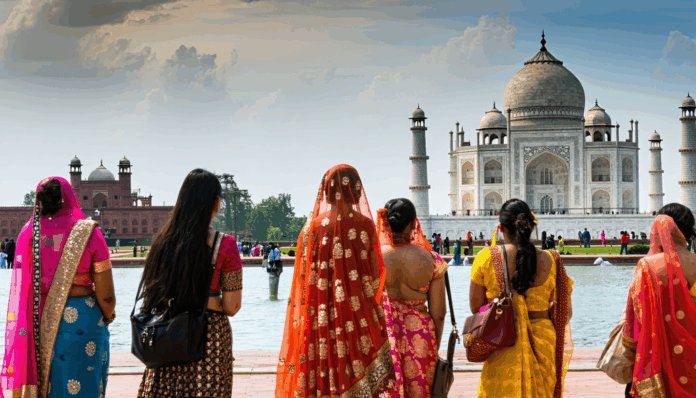Introduction
India, a land of vibrant cultures, breathtaking landscapes, and ancient history, continues to captivate travelers from across the globe. In recent years, travel in India has seen a remarkable surge, driven by government initiatives, improved infrastructure, and a growing interest in unique experiences. From the snow-capped Himalayas to the serene backwaters of Kerala, the country offers something for every explorer. This article delves into the latest trends shaping tourism in India, the impact of new policies, and what lies ahead for this dynamic sector.
The Boom in Domestic and International Tourism
Travel in India has witnessed a significant uptick, with both domestic and international tourists contributing to the growth. According to the Ministry of Tourism, India welcomed over 10.9 million foreign visitors in 2022, a sharp recovery post-pandemic. Domestic tourism also soared, with more than 1.5 billion trips recorded in the same year, fueled by a rising middle class and affordable travel options.
The government’s focus on campaigns like “Incredible India” has played a pivotal role. These initiatives highlight lesser-known destinations, encouraging travelers to explore beyond popular spots like the Taj Mahal or Jaipur’s palaces. Additionally, the introduction of e-visas for citizens of over 160 countries has simplified entry processes, making India a more accessible destination.
Infrastructure Upgrades Transforming Travel in India
A key driver behind the tourism boom is the rapid development of infrastructure. The government has invested heavily in modernizing airports, with over 150 operational airports now connecting even remote regions. The ambitious Bharatmala and Sagarmala projects aim to improve road and port connectivity, easing access to tourist hotspots.
High-speed rail projects, such as the Mumbai-Ahmedabad bullet train, are set to revolutionize inter-city travel by 2026. “Better infrastructure not only enhances the travel experience but also boosts local economies,” says Dr. Anil Kothari, a tourism policy expert. These advancements are making previously inaccessible areas like the Northeast more appealing to adventurers.
Sustainable Tourism: A Growing Focus
Sustainability is becoming a cornerstone of travel in India as environmental concerns take center stage. The Ministry of Tourism has launched initiatives to promote eco-friendly practices, such as waste management programs at heritage sites and incentives for green hotels. Destinations like Ladakh and Sikkim are leading the way with bans on single-use plastics and community-driven conservation efforts.
Travelers are also showing a preference for responsible tourism. Homestays and rural tourism circuits are gaining popularity, offering authentic experiences while supporting local livelihoods. This shift reflects a broader global trend toward mindful travel that prioritizes cultural preservation and environmental protection.
Impact on Stakeholders and Local Communities
The surge in tourism is a double-edged sword for stakeholders. While it generates revenue—contributing 6.8% to India’s GDP in 2022—it also poses challenges like overcrowding at iconic sites. Local communities benefit from job creation, with over 47 million people employed directly or indirectly in the sector, but they often face issues like resource strain.
Tour operators are adapting by offering curated experiences tailored to niche interests like wellness retreats or adventure sports. “Personalized travel is the future; tourists want unique stories, not just sightseeing,” notes Priya Sharma, CEO of a leading travel agency. Balancing growth with sustainability remains a critical concern for all involved.
Future Outlook: Opportunities and Challenges
Looking ahead, travel in India holds immense potential. The government aims to attract 20 million foreign tourists annually by 2030 through policies like tax incentives for tourism businesses and international roadshows. Emerging trends such as medical tourism—India is a hub for affordable healthcare—and spiritual journeys continue to draw diverse crowds.
However, challenges persist. Over-tourism at popular destinations risks damaging cultural heritage, while climate change threatens natural wonders like coastal beaches. Addressing these issues will require collaboration between policymakers, businesses, and travelers to ensure long-term growth without compromising India’s treasures.
Conclusion
Travel in India is at an exciting crossroads, blending tradition with modernity to offer unparalleled experiences. With robust infrastructure upgrades, a push for sustainability, and innovative marketing, the country is poised to become a global tourism leader. Yet, preserving its rich heritage amid rapid growth remains paramount. As India opens its doors wider to the world, it invites travelers to discover not just destinations but stories etched in every corner of this incredible land.
Frequently Asked Questions (FAQs)
1. What are the top destinations for travel in India?
India offers diverse attractions like the Taj Mahal in Agra, Kerala’s backwaters, Rajasthan’s forts, and Goa’s beaches. Offbeat spots like Spiti Valley and Andaman Islands are also gaining traction.
2. Is travel in India safe for international tourists?
Yes, India is generally safe for tourists. However, it’s advisable to follow local guidelines, avoid isolated areas at night, and stay updated on travel advisories.
3. What is the best time to visit India?
The ideal time depends on the region. October to March is perfect for most parts due to pleasant weather, while summer (April-June) suits hill stations like Shimla or Darjeeling.
4. How has sustainable tourism impacted travel in India?
Sustainable tourism promotes eco-friendly practices and supports local communities through initiatives like homestays and conservation projects, ensuring minimal environmental harm.
This article captures the essence of travel in India today while providing actionable insights for readers planning their next journey to this captivating destination.

